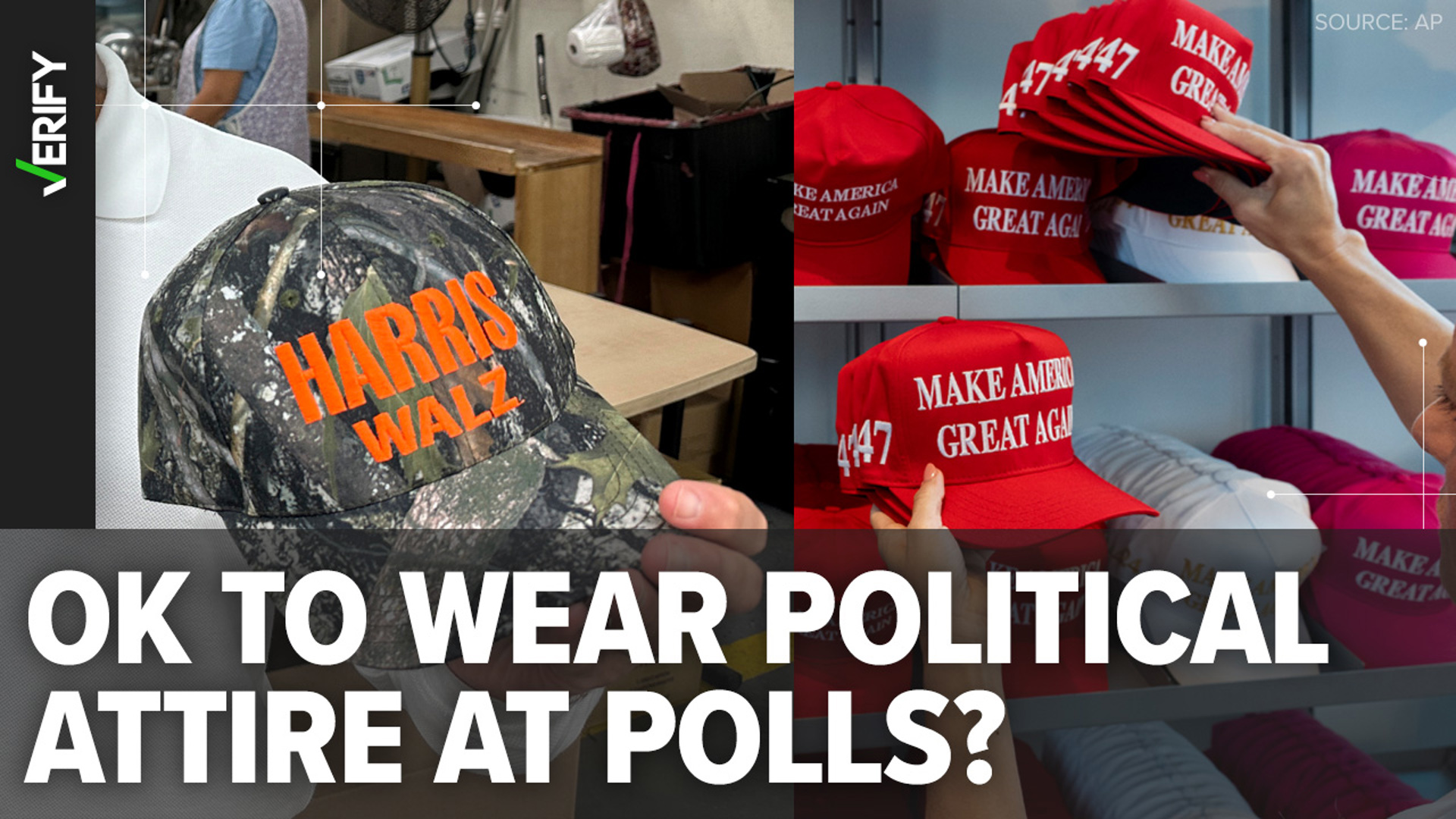As 2024 general election early voting is underway across the country, numerous viral posts appearing to show voters being turned away from polls or asked to remove clothing are circulating online amid confusion.
An image of a woman voting shirtless is being shared after a poll worker told her she could not wear her Trump t-shirt to vote. In another video, a man says his family was told to remove their “Make America Great Again” hats before being allowed to vote in New Jersey. Another voter on Reddit asked why they were asked to cover up their anti-Trump shirt when going to vote in Illinois. But other social media posts show people wearing Kamala Harris shirts to vote.
VERIFY reader Natalie reached out to ask if it's true that you can’t wear clothing or items in support of a specific candidate when voting at the polls.
THE QUESTION
Do states have laws against wearing political attire at the polls?
THE SOURCES
THE ANSWER
Yes, many states have laws against wearing political attire at the polls.
WHAT WE FOUND
Whether you can wear a political shirt or hat while voting at the polls depends on where you are located. States set their own electioneering laws or restrictions on promoting a political candidate or policy within a specific distance of the polls. These laws exist to make polling places neutral and prevent voters from being influenced or pressured to vote a certain way on Election Day.
Twenty-two states explicitly prohibit wearing attire that references a candidate, party or policy while voting at the polls. The rest have electioneering laws that do not mention attire, but can be interpreted to include clothing items depending on the situation or officials at polling locations.
According to the National Conference of State Legislatures and the National Association of Secretaries of State, wearing attire related to a political candidate or policy while voting at the polls in these states is explicitly prohibited:


- Arkansas
- California
- Delaware
- Hawaii
- Indiana
- Kansas
- Maine
- Michigan
- Minnesota
- Montana
- Nebraska
- Nevada
- New Hampshire
- New Jersey
- New York
- New Mexico
- North Dakota
- Rhode Island
- South Carolina
- Tennessee
- Texas
- Vermont
In these states, voters must cover up or remove political attire before entering the polling location.
In Maine, wearing apparel at the polls in promotion of a candidate or policy is generally prohibited, but campaign buttons “no bigger than three inches around” are allowed, according to Maine’s Department of State.
Many other states, including Arizona, Colorado, Georgia, and Louisiana, do not specifically mention attire in their electioneering laws, but do prohibit the display of political materials or ban verbal promotion of a candidate or policy.
Although these states don’t specifically prohibit wearing political attire at the polls, local voting precincts or state board of elections officials could interpret certain items or behavior to be in violation of the state’s more general electioneering laws.
A few states do allow voters to wear political apparel at the polls, as long as certain rules are followed. For instance, in Maryland, it is not considered electioneering “if a voter wears campaign buttons, t-shirts, or stickers when voting,” according to the State Board of Elections. Political attire is allowed as long as the voter does not loiter in the polling area, in which case they’d be in violation of the state’s electioneering law.
To find out electioneering rules in your state, check with local officials or locate your state in the National Association of Secretaries of State’s overview of the laws.
This story is also available in Spanish / Lee este artículo también en español: Sí, los estados tienen leyes contra el uso de ropa con mensajes políticos en las urnas

